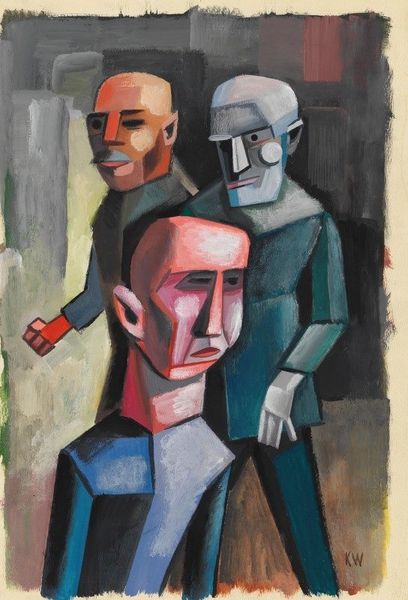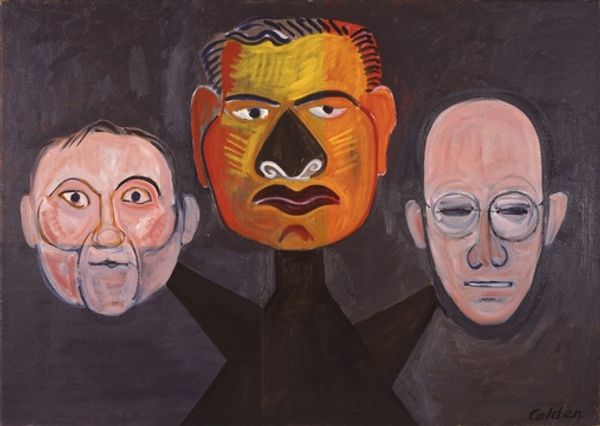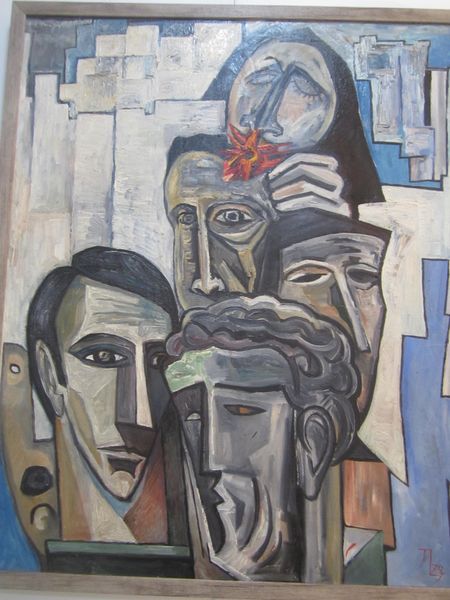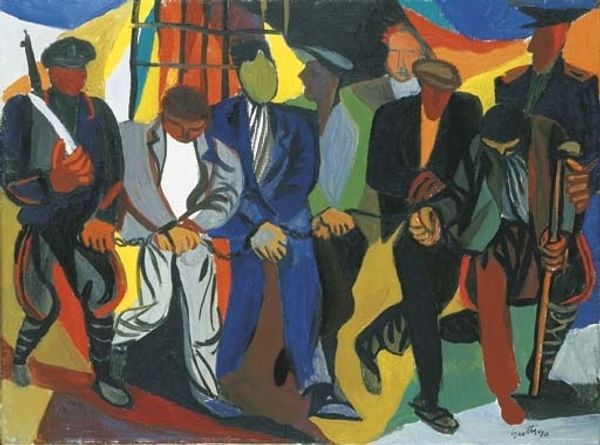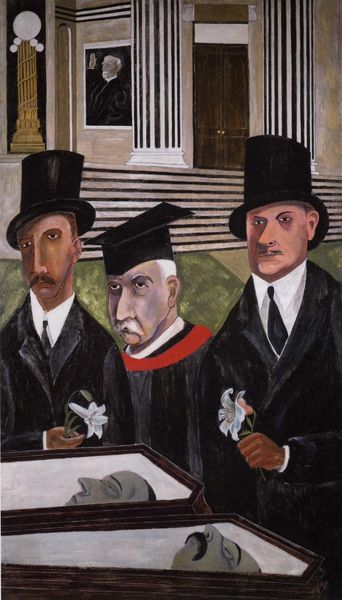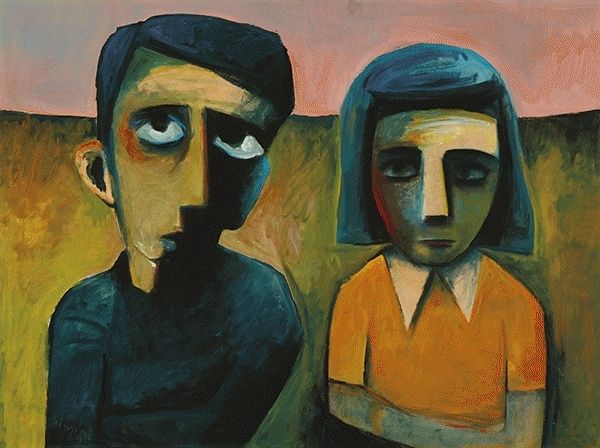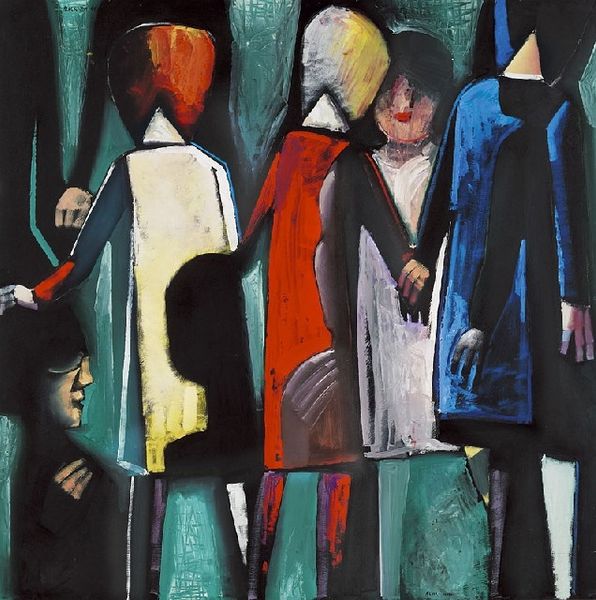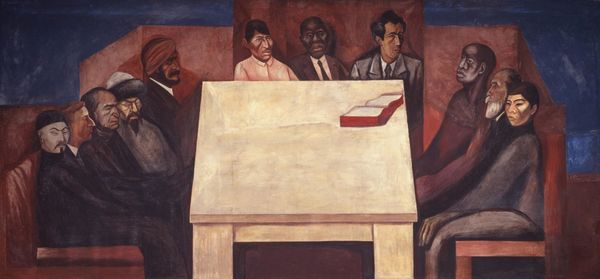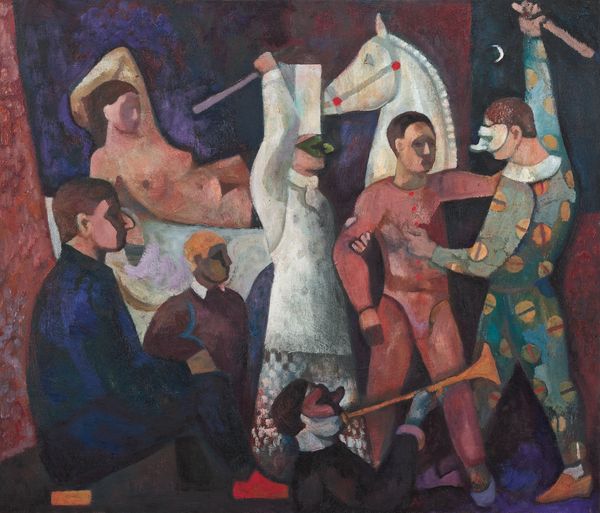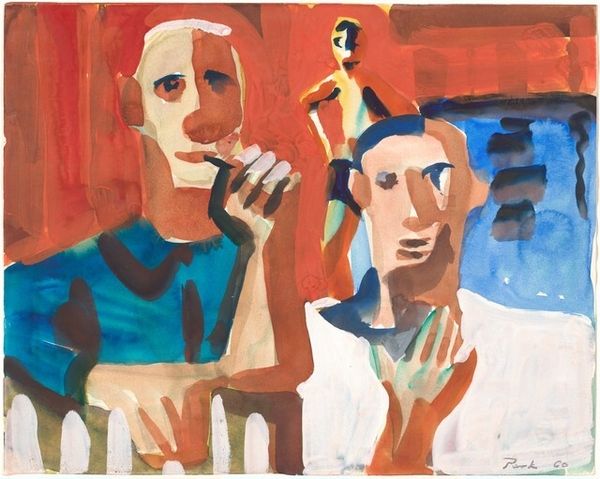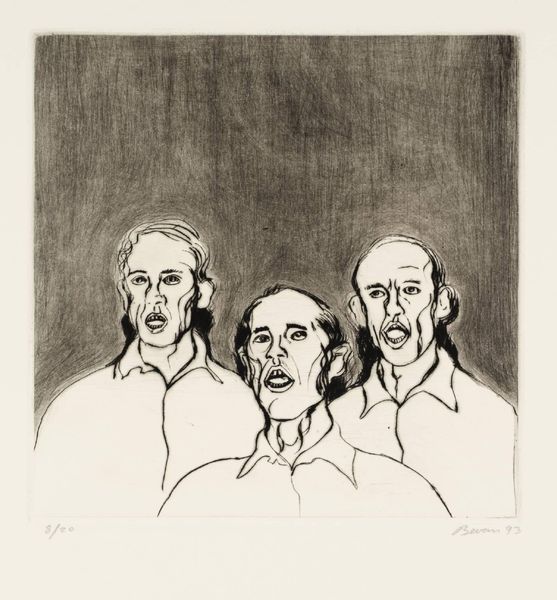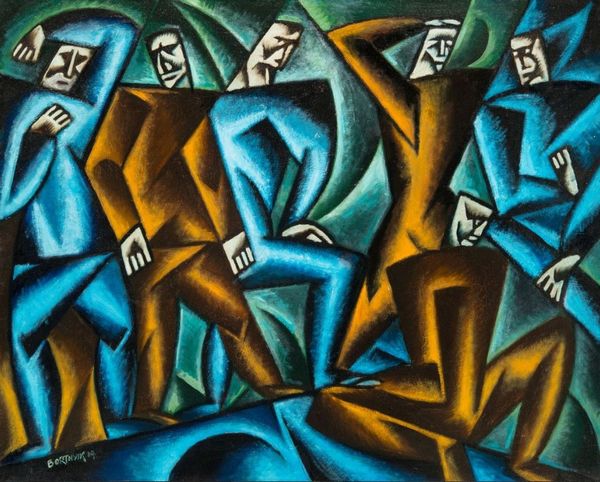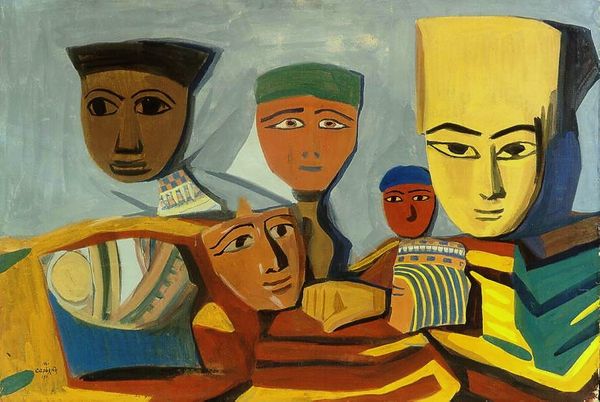
painting, acrylic-paint
#
portrait
#
african-art
#
contemporary
#
narrative-art
#
painting
#
pop art
#
acrylic-paint
#
figuration
#
acrylic on canvas
#
pop-art
#
portrait drawing
#
portrait art
#
fine art portrait
Copyright: Faith Ringgold,Fair Use
Curator: Faith Ringgold's “American People Series #4: The Civil Rights Triangle” painted in 1963. What a striking gathering. How does it strike you? Editor: Immediately, it's the weight, the density of faces all staring out, some direct, others sidelong. The color palette is restrained, almost somber, and the figures feel so monumental, compressed into the canvas. Curator: Faith painted these works during a pivotal time. The Civil Rights Movement was in full swing, and she responded to the racial tensions with the “American People” series. Ringgold’s response involved refusing to paint anything other than the American scene with Black representation at the center. She asked herself whether she would show images about black people or not, if that would negate her ability to have a real American Art, but then she realized her Blackness had to be embraced rather than suppressed, and what you see here is what you get. Editor: You know, I see that refusal reflected formally. There's something confrontational in the gaze of these figures. It isn’t just portraiture; it is an interrogation. They seem to both demand and resist our gaze simultaneously. Especially given the period, there's such boldness to representing Black subjects with such presence, such...seriousness. They’re the focus. They have taken back the power and right to narrate themselves, with ringgold leading that shift of vision in American Art Curator: I see the artist working through the challenges of representation. And while there is the use of serious tones, the work feels full of hope. To paint it in that period meant you are working with possibilities. In the composition the Black figure occupies all sections. The Black artist has found her vision in her people, as if daring the viewer to confront their discomfort or ignorance. Editor: Absolutely. And to consider this as part of her broader body of work, which frequently incorporates text and quilting...it all speaks to Ringgold's dedication to storytelling, to amplifying marginalized voices. There is an interesting dialogue of power that’s set up by the inclusion of one white man behind two Black men. It suggests that a change is indeed coming but there is someone observing in the background that they have to answer to, too. It might be her vision about systemic hierarchy, how a portrait painting about equality isn’t exactly flat or at equal access. Curator: Thinking about Ringgold, and her impact… She didn't shy away from the complexities of race and identity, even when the art world wasn't quite ready to fully embrace it. Editor: Yes. This work really highlights how artistic expression can be such a powerful tool for social commentary, especially for self definition.
Comments
No comments
Be the first to comment and join the conversation on the ultimate creative platform.
